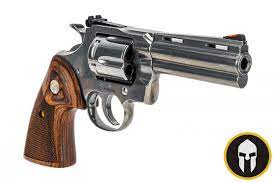How Guns Work.
How Guns Work.

Guns, also known as firearms, operate based on the principles of combustion and projectile motion. Here’s a simplified explanation of how guns work:
1. *Loading:*
The process begins with loading ammunition into the gun. Ammunition typically consists of a cartridge that contains a projectile (bullet), gunpowder, and a primer.
2. *Ignition:*
When the trigger is pulled, it releases a firing pin or striker that strikes the primer. The primer contains a small amount of sensitive explosive material. When struck, the primer ignites, creating a spark.
3. *Combustion:
* The spark from the primer ignites the gunpowder inside the cartridge. Gunpowder is a mixture of chemicals that burn rapidly, producing a large volume of hot gases.
4. *Expansion of gases:
* As the gunpowder burns, it rapidly produces gases that build up pressure inside the cartridge. This pressure forces the bullet out of the cartridge and into the barrel of the gun.
5. *Projectile motion:
* The rapidly expanding gases push the bullet down the barrel, propelling it forward with great force. The barrel is rifled, meaning it has spiral grooves inside, which causes the bullet to spin as it exits. This spinning motion stabilizes the bullet’s flight.
6. *Ejection:*
After the bullet leaves the barrel, the empty cartridge case is ejected from the gun. This is typically done by the gun’s mechanism, which may be a semi-automatic action, bolt action, or other mechanisms depending on the type of firearm.
7. *Cocking and Resetting:*
In semi-automatic firearms, the gun’s action must reset and cock itself for the next shot. In some firearms, this is done automatically, while in others, it requires manual intervention.
It’s important to note that there are various types of guns, including handguns, rifles, shotguns, and automatic firearms, each with its own specific mechanisms and features. Additionally, gun safety is a crucial aspect of firearm use, and responsible ownership includes understanding and following proper handling and storage procedures




